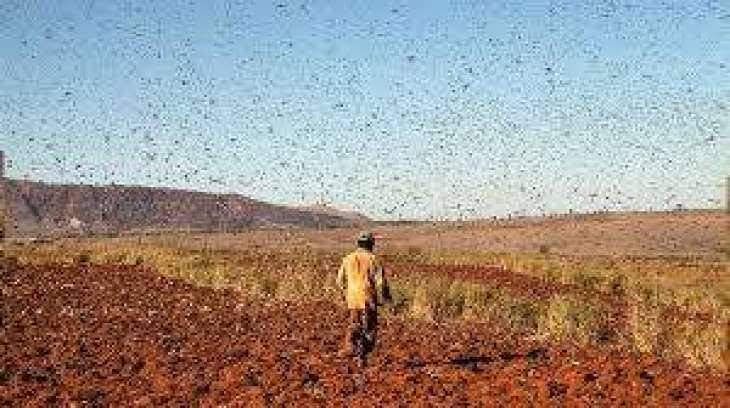Warning for Pakistan: Locust threat getting worse in Greater Horn of Africa

Stay tuned with 24 News HD Android App

As the southern parts of Pakistan have been facing locust attack for months, the Food and Agriculture Organisation (FAO) Locust Watch warned that the current situation in East Africa remained extremely alarming as hopper bands and an increasing number of new swarms formed in northern and central Kenya, southern Ethiopia, and Somalia.
It means Pakistan would remain vigilant as the locust attack had originated in the Greater Horn of Africa. Since then, billions of locusts have blitzed through parts of East Africa and South Asia, ravaging crops and threatening food supplies.
It would be an alarming development as the world is already crippled by the coronavirus pandemic which had earlier prompted a warning about the threats to food security.
See Also: Traders ask govt to waive taxes on food items, end lockdown
The latest report means that Sindh Agriculture Minister Ismail was right in saying that the incompetence and laziness shown by the Centre had threatened the agriculture sector in the entire country.
He warned any further delay in aerial and ground spray would result in paying a very high cost, adding that the insects were also present in southern Punjab and Balochistan.
Rahu said locusts were still present in an area of 25,000 square kilometres, with a warning that the insects would prove another corona for agriculture after rains.
According to the FAO, this represents an unprecedented threat to food security and livelihoods because it coincides with the beginning of the long rains and the planting season.
Although ground and aerial control operations are in progress, widespread rains that fell in late March will allow the new swarms to mostly remain, mature and lay eggs while a few swarms could move from Kenya to Uganda, South Sudan and Ethiopia.
“During May, the eggs will hatch into hopper bands that will form new swarms in late June and July, which coincides with the start of the harvest,” it added.
Similarly, the United Nations Office for the Coordination of Humanitarian Affairs said, “If the swarms are not contained, impacts on crops and forage will drive up hunger in areas already facing very high levels of food insecurity. More than 25 million people in the affected countries in the Greater Horn of Africa (Ethiopia, Kenya, Somalia, South Sudan, Tanzania, Sudan and Uganda) are already facing severe food insecurity.”
